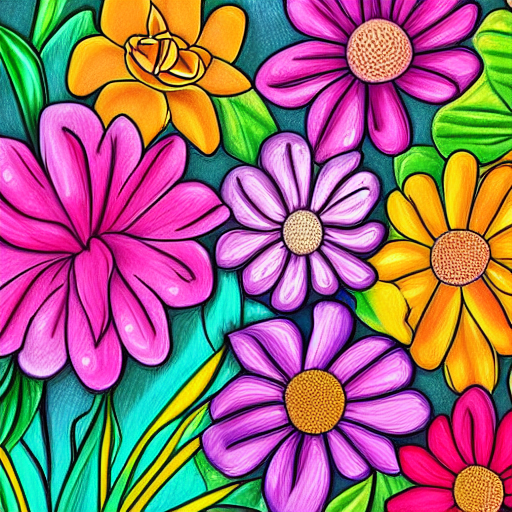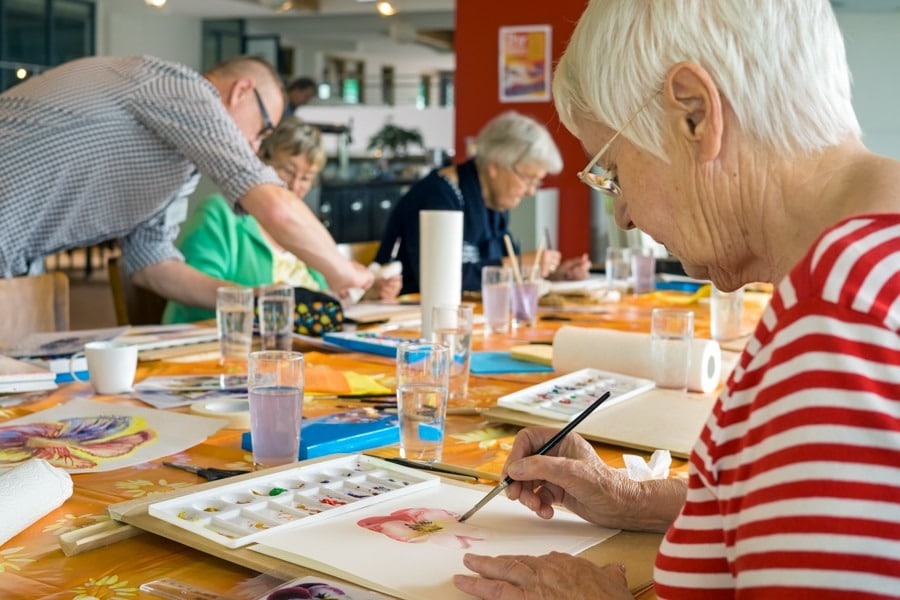Art Therapy for Addiction Recovery
Art therapy is a powerful tool that has been found to be beneficial in addiction recovery. Through the use of artistic expression, individuals can tap into their creativity and emotions to facilitate healing and personal growth. Here, we will explore what art therapy is, how it can help in addiction recovery, the various techniques used in art therapy, and what people can expect from an art therapy session. If you or a loved one is struggling with addiction, consider trying art therapy as an innovative approach to support your recovery journey.
What is Art Therapy for Addiction?
Art therapy is a versatile and dynamic practice that can be tailored to suit individuals of all ages and backgrounds. Whether it’s through painting, drawing, sculpting, or even digital art, the creative process allows individuals to tap into their subconscious and express themselves in a unique and powerful way. By engaging in art therapy, individuals can gain insight into their emotions, develop coping mechanisms, and improve their overall mental health.
Furthermore, art therapy is not limited to traditional art mediums; it can also incorporate elements of music, dance, and drama. This multidisciplinary approach allows for a holistic exploration of one’s inner world and can be particularly beneficial for individuals who may find it challenging to articulate their feelings verbally. Through the use of metaphor and symbolism, art therapy provides a safe and non-judgmental space for individuals to explore complex emotions and experiences, leading to a deeper understanding of themselves and their relationships.
Does Art Therapy Help in Addiction Recovery?

Art therapy has proven to be highly effective in drug and alcohol addiction recovery for several reasons. Firstly, addiction often stems from unresolved trauma, deep-rooted emotional pain, or underlying mental health issues. Art therapy provides a safe and non-threatening space for individuals to express these complex emotions and gain insights into the underlying causes of their addiction.
Additionally, art therapy helps clients develop healthier coping mechanisms by providing a creative outlet for stress and anxiety. Instead of turning to substances, individuals can channel their emotions into their artwork, allowing for increased self-awareness and personal growth. Moreover, engaging in the artistic process promotes relaxation, boosts self-esteem, and fosters a sense of accomplishment – all critical factors for successful addiction recovery.
Furthermore, art therapy can also aid in building a sense of community and connection among individuals in recovery. Group art therapy sessions allow participants to share their experiences, support one another, and feel a sense of belonging. This communal aspect of art therapy can help combat feelings of isolation and loneliness that often accompany addiction.
The creative nature of art therapy can spark a newfound sense of curiosity and exploration in individuals recovering from addiction. Through experimenting with different art forms and techniques, clients can discover new interests, skills, and passions, which can contribute to a more fulfilling and purpose-driven life beyond addiction.
What are Art Therapy Techniques?
Art therapy encompasses a wide range of techniques that can be tailored to meet the unique needs of each individual. Some common techniques include:
- Painting and Drawing: By utilizing various art materials such as paint, pastels, and charcoal, individuals can visually express their emotions and explore their inner world.
- Sculpture and Collage: Creating three-dimensional or mixed media artwork can serve as a metaphorical representation of one’s journey toward recovery.
- Visual Journaling: Keeping a visual journal allows individuals to document their thoughts and emotions through a combination of writing and artistic expression.
- Group Art Projects: Collaborative art projects foster a sense of community and provide individuals with the opportunity to connect with others who have similar experiences.
Art therapy techniques can also include phototherapy, where individuals use photography as a means of self-expression and reflection. By capturing images that resonate with their emotions or experiences, individuals can gain insight into their subconscious thoughts and feelings.
Another technique commonly used in art therapy is mask-making. Creating masks allows individuals to explore different aspects of their identity or emotions that they may not feel comfortable expressing openly. The process of designing and decorating a mask can help individuals externalize their inner struggles and gain a deeper understanding of themselves.
In addition to the techniques mentioned above, music therapy can also be incorporated into art therapy sessions. Music has the power to evoke emotions and memories, providing individuals with a unique way to express themselves creatively. Through activities such as songwriting, listening to music, or playing instruments, individuals can explore their feelings and experiences in a non-verbal manner.
What Do People Do in Art Therapy?

During an art therapy session, individuals are encouraged to explore their creativity freely. They may choose to work on a specific theme or simply let their intuition guide them. The therapist may provide prompts or suggest different art materials to facilitate the process. The focus is not on creating a masterpiece, but rather on the process of self-discovery and self-expression. Individuals can experiment with different art techniques and engage in reflection and discussion with the therapist as they navigate their artwork’s meaning.
Art therapy sessions can be conducted either individually or in a group setting, depending on the individual’s preference and therapeutic goals. Regardless of the format, the supportive environment created by the therapist allows individuals to share their artwork and discuss their experiences without judgment.
Art therapy is a versatile form of therapy that can benefit people of all ages and backgrounds. Children, adolescents, adults, and seniors can all find value in expressing themselves through art. For children, art therapy can be a valuable tool for processing emotions and developing communication skills. Adolescents may use art as a means of exploring their identity and coping with the challenges of adolescence. Adults often turn to art therapy to manage stress, improve self-esteem, and gain insight into their emotions. Even seniors can benefit from art therapy by enhancing their cognitive abilities and fostering a sense of accomplishment.
Try Art Therapy at Agape Treatment Center

If you are interested in exploring art therapy as a part of your addiction recovery journey, consider seeking treatment at Agape Treatment Center. With a team of dedicated art therapists, Agape Treatment Center offers comprehensive addiction treatment programs that incorporate art therapy as a key component. Through their expert guidance, you can harness the power of artistic expression to enhance your recovery process and rediscover your inner strengths.
Remember, addiction recovery is a personal and transformative journey. By incorporating art therapy into your treatment plan, you can deepen your self-awareness, gain new insights, and embark on a path of healing and growth.
Art therapy is a form of psychotherapy that utilizes the creative process of making art to improve and enhance the physical, mental, and emotional well-being of individuals. At Agape Treatment Center, art therapy is integrated into their holistic approach to addiction recovery, providing clients with a unique outlet for self-expression and reflection. Through painting, drawing, sculpting, and other creative activities, individuals can explore their thoughts and emotions in a safe and supportive environment.
Furthermore, art therapy can help individuals develop coping skills, improve self-esteem, and reduce stress and anxiety. The act of creating art can be cathartic and empowering, allowing individuals to communicate their experiences and feelings in a non-verbal way. By engaging in art therapy at Agape Treatment Center, clients can tap into their creativity and resilience, fostering personal growth and transformation along their recovery journey. Start your creative journey toward recovery and contact Agape Treatment Center today!
- April 14, 2024
- Updated Date: April 23, 2024



